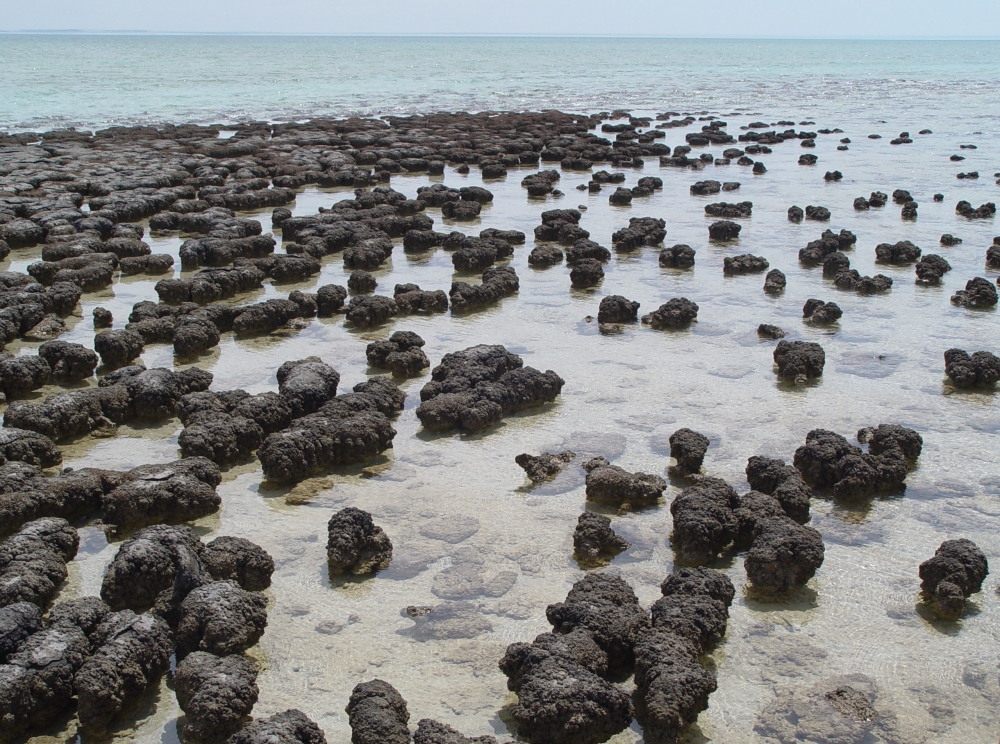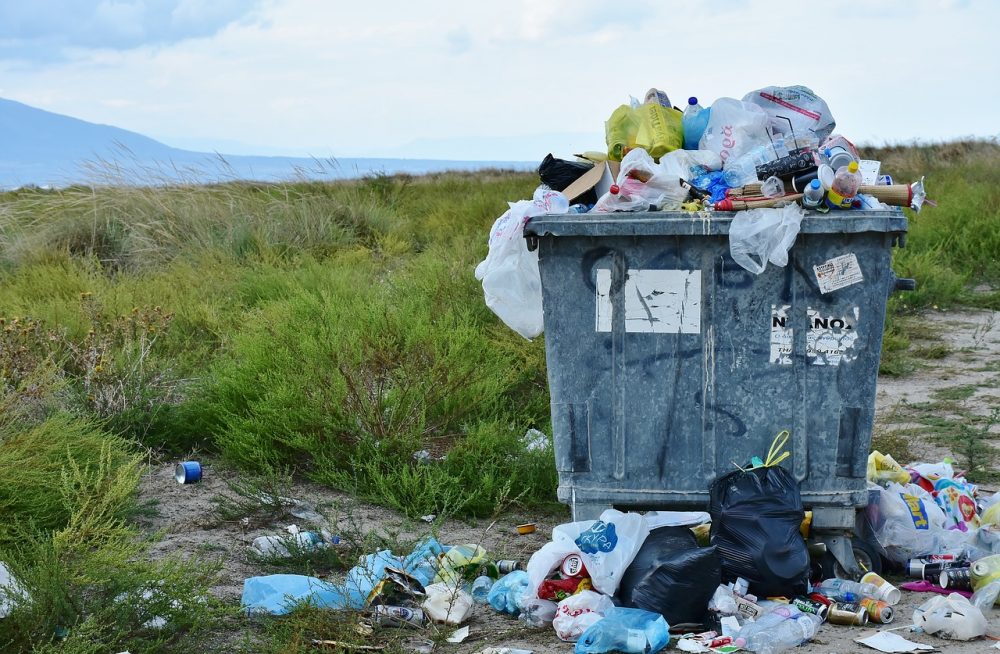I was watching a Chinese TV documentary on the evolutionary history of the Earth’s atmosphere a few days ago. The highlighting of the significance of Shark Bay in Australia in the show caught my attention. I told my wife I did not know such an extraordinary place exists in Australia and I guessed that it may be located in Western Australia. My intuition turned out to be correct after checking Wikipedia.
Shark Bay is a World Heritage Site in the Gascoyne region of Western Australia, located about 800 km north of Perth, on the westernmost point of Australia. In the south of the bay at Hamelin Pool, you can find unique structures called stromatolites that resemble a cross between a cauliflower and a rock. However, unlike rocks they are alive. Each stromatolite has a top surface layer teeming with colonies of single-celled microbes called cyanobacteria. Each square metre of surface can pack at least 3,000 million cyanobacteria. The cyanobacteria produces sticky mucus which traps sediment and reacts with calcium carbonate in the water to form thin laminations of limestone. These laminations accrete over time, resulting in the banded pattern common to stromatolites.
The stromatolites at Shark bay are significant because they represent a major stage in the Earth’s evolutionary history. Though they are just 2,000 to 3,000 years old, the cyanobacteria that build them are similiar to life forms found on Earth more than 3.5 billion years ago during the Precambrian period when life was created. In fact, cyanobacteria was the predominant form of life on early earth for more than 2 billion years, spanning the first 7/8th of the history of life.
The atmosphere of the early Earth had a different composition, comprising primarily of methane, ammonia, water, hydrogen sulfide, carbon dioxide or carbon monoxide, and phosphate, with molecular oxygen and ozone either rare or absent (Ref 1).
Cyanobacteria were the first organisms with photosynthetic abilities. By releasing oxygen through photosynthesis, they were instrumental in creating the Earth’s atmospheric oxygen. The released oxygen first combined with soluble ferric iron that was present in vast quantities in the Archean oceans. Ferric iron was oxidized to ferrous iron and became precipitated out as a solid (rust), forming Banded Iron Formations (BIFs) which are another form of stromatolites. The banding is assumed to result from cyclic peaks in oxygen production. Excess oxygen was only released into the atmosphere after the supply of oxidizable surfaces ran out.
The rising oxygen levels may have wiped out a huge portion of the Earth’s anaerobic inhabitants at the time, in what is termed the Oxygen Catastrophe. Cyanobacteria, by producing oxygen, were essentially responsible for what was likely the largest extinction event in Earth’s history. Additionally, the locking away of carbon dioxide in stromatolite limestone reefs and the combination of free oxygen with atmospheric methane triggered the Huronian glaciation, possibly the longest snowball Earth episode ever. The entire or almost the entire Earth’s surface became frozen in ice (view video), with the equator as cold as modern day’s Antarctica. The Earth seemed destined to be locked in this cold state perpetually as the ice surface would have reflected sunlight back to the atmosphere, preventing any chance of warming.
The saviour came in the form of volcanic eruptions, which emitted large quantities of carbon dioxide into the atmosphere, thereby leading to global warming. The eventual melting of the snow and ice covering most of the Earth’s surface took place fairly quickly, as short as a 1,000 years.
The thawing and creation of a modern atmosphere powered the Cambrian explosion, characterized by the relatively rapid appearance of most major phyla and evolution of the aerobic forms of life.
Click here to watch a video on stromatolites.

Photo of stromatolites by Paul Harrison and uploaded to Wikipedia
At Hamelin Pool, there is an interpretive boardwalk for tourists to venture out and examine the stromatolite structures. I hope I can visit the place one day.
Reference




